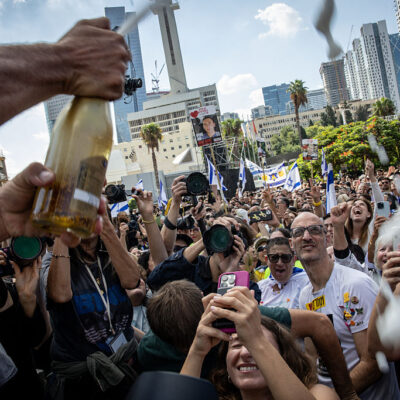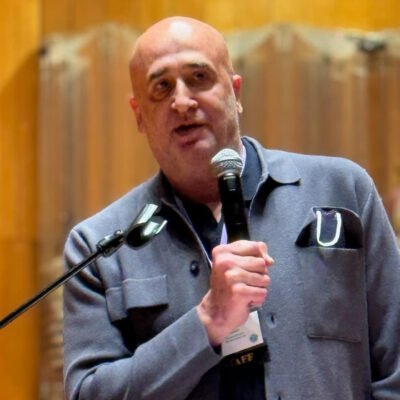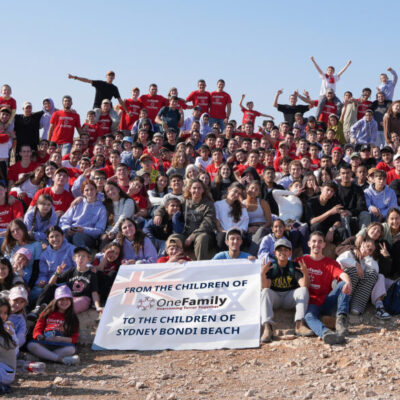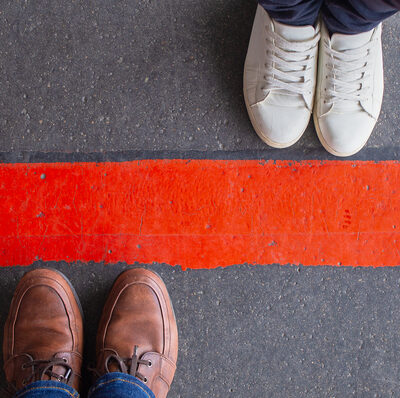Morning Run
Memorials. Memories.

By Robert Bank
My life in the New York City of the COVID-19 pandemic has been quieter than in any year in the past. I work virtually from my West Side apartment, and I no longer take the subway to my Midtown office or travel the world many months of the year as the leader of a global human rights organization. With a lighter travel schedule and a sharper geographic focus, I’ve had time to pay closer attention to what’s most immediately around me.
On my morning runs, I’ve “discovered” three memorial sites – they were always there, it was my attention that was elsewhere. One site honors the resistance to the Holocaust, another remembers one of my human rights heroes, Eleanor Roosevelt, and a third recalls the long history of horrific treatment of Black people in America.
My runs begin outside my apartment building, not far from the memorial to the Warsaw Ghetto Uprising just inside Riverside Park at West 83rd Street. Dedicated in 1947 at an opening that included 100 Buchenwald and Dachau concentration camp survivors, only a scant two years after the camps were liberated, beneath the plaza are buried two boxes of soil from two other concentration camps, Terezin and Sered. Lately, when I run here, I feel that I’m on sacred ground. I think about the courage of the Jewish fighters in the Warsaw Ghetto in 1943. They knew their survival was unlikely – but they rose up in resistance to the Nazis rather than be transported to death camps. They were inspired to fight because as Marek Edelman, a commander of the ghetto fighters who survived the war, said, “Our inspiration was to pick the time and place of our deaths.” It is in thinking about the two buried boxes of soil that my spirit is both crushed and uplifted. Crushed by remembering the catastrophe of the Holocaust, uplifted by the bravery of the Warsaw Ghetto fighters 77 years ago – and of all people who risk their lives for human rights and resisting genocide today.
From the plaza, I often run the ten-block path through the park to the statue of Eleanor Roosevelt at West 72nd Street, whose commitment to human rights was tied to the same dark chapter of history – the Holocaust and World War II. At the base of her statue, unveiled in 1996, are her words, “Where after all do universal human rights begin? In small places close to home … where every man, woman and child seeks equal justice, equal opportunity, equal dignity,” describing the inspiration for the Universal Declaration of Human Rights, which she helped birth in 1948. Responding to the horrors of the Holocaust abroad and revolted by systemic racism at home, Eleanor Roosevelt came together with leaders of the global community to enshrine inalienable human rights into an aspirational document for the world, the basis for every fight for human rights to this day.
We find ourselves in a moment when the past and present are in conversation with one another, and Eleanor Roosevelt’s perch is no exception. Of late, it has been a space for big political statements. In recent months, I’ve stopped my run to bear witness to a chalk memorial drawn around her statue honoring the late great freedom fighter, Congressman John Lewis, tributes with the names of Black Americans murdered by the police, support for the Black Lives Matter movement, and celebrating the victory of Senator Kamala Harris, soon to be the first woman and Black person to serve as Vice President of the United States.
In my inner monologues and imagined dialogues which mark my running, I have convinced myself that Eleanor Roosevelt would have embraced the Black Lives Matter movement. She fought passionately against lynching and segregation in the U.S., as strongly as she fought for international human rights. Despite (or, in spite of) her husband’s decidedly mixed record on race, the former First Lady used her position to fight racism. It’s a cruel irony of our American history that even in 1948, when Eleanor led the U.S. in signing onto the International Declaration of Human Rights, we were still a segregated nation by law in many areas of the country. And it’s even more tragic that today, 72 years later, we are still a nation only beginning to truly reckon with our history of racism, after four years of suffering under the rule of a shamelessly racist president.
As someone who grew up in South Africa’s racist apartheid regime, I emigrated to the United States in 1977, fleeing a country that mandated that I serve in its armed forces to enforce its racist ideology and policies.
I arrived in New York in 1977 with the naïve belief that the United States always stood for human rights for all. But soon enough I learned about our long history of injustice toward Black and brown Americans, from the arrival of the first enslaved people in 1619 and to this very day.
The monuments we build, like words, make worlds. That’s why I am heartened by the Andrew W. Mellon Foundation’s commitment, announced in October, to invest a quarter of a billion dollars over five years to help us tell and remember our histories more fully through memorials, including those of formerly excluded people and interrogating those we’ve placed on pedestals in the past. In the words of the foundation’s president, Elizabeth Alexander, “We want to ask how we can help think about how to give form to the beautiful and extraordinary and powerful multiplicity of American stories.” In the spirit of Alexander’s words, I’ve been buoyed by the addition of Women’s Rights Pioneers, the first statue ever of women in Central Park. Unveiled in August, this monument depicts freed slave and abolitionist Sojourner Truth and her fellow suffragists, Susan B. Anthony and Elizabeth Cady Stanton, conferring around a shared table – in my mind, discussing the path to a new, more inclusive America.
In that same vein, I’ve spent many morning runs this year thinking about race and racism, especially when I have run past a marker just inside the entrance to Central Park at 85th Street. This site commemorates Seneca Village, the home of the first community of free Blacks in New York. Here, between 1825 and 1857, lived a community of predominantly Black Americans, anchoring life for 225 people, with over 50 homes, three churches and a school. When the City decided to build Central Park, it used eminent domain to acquire the land, requiring all the residents to leave and losing all memory of this community to history.
When I first saw the Seneca Village site marker, I stopped to read about a 2011 excavation of the site by local university archeologists that uncovered stone foundation walls and thousands of artifacts of family life, such as dinner plates and a child’s shoe. One member of the team remarked that since no diaries were found, they couldn’t excavate the “dreams” of the residents. Alas, these residents’ dreams are left to our imagination, and to the imaginations of their descendants.
“History, despite its wrenching pain, cannot be unlived, but if faced with courage, need not be lived again,” said Maya Angelou. The earth under Terezin, the artifacts of the lives of free Black Americans under the earth of Central Park, and the words and deeds of Eleanor Roosevelt accompany me on my morning runs. Yes, each in their own way are about loss – the loss of lives and of dreams not realized. But they are also about the courage to stay committed to the hard work of justice. Inspired by these memorials and memories, that’s the path on which I’m continuing to run.
Robert Bank is President and CEO of American Jewish World Service.

 Add EJP on Google
Add EJP on Google










